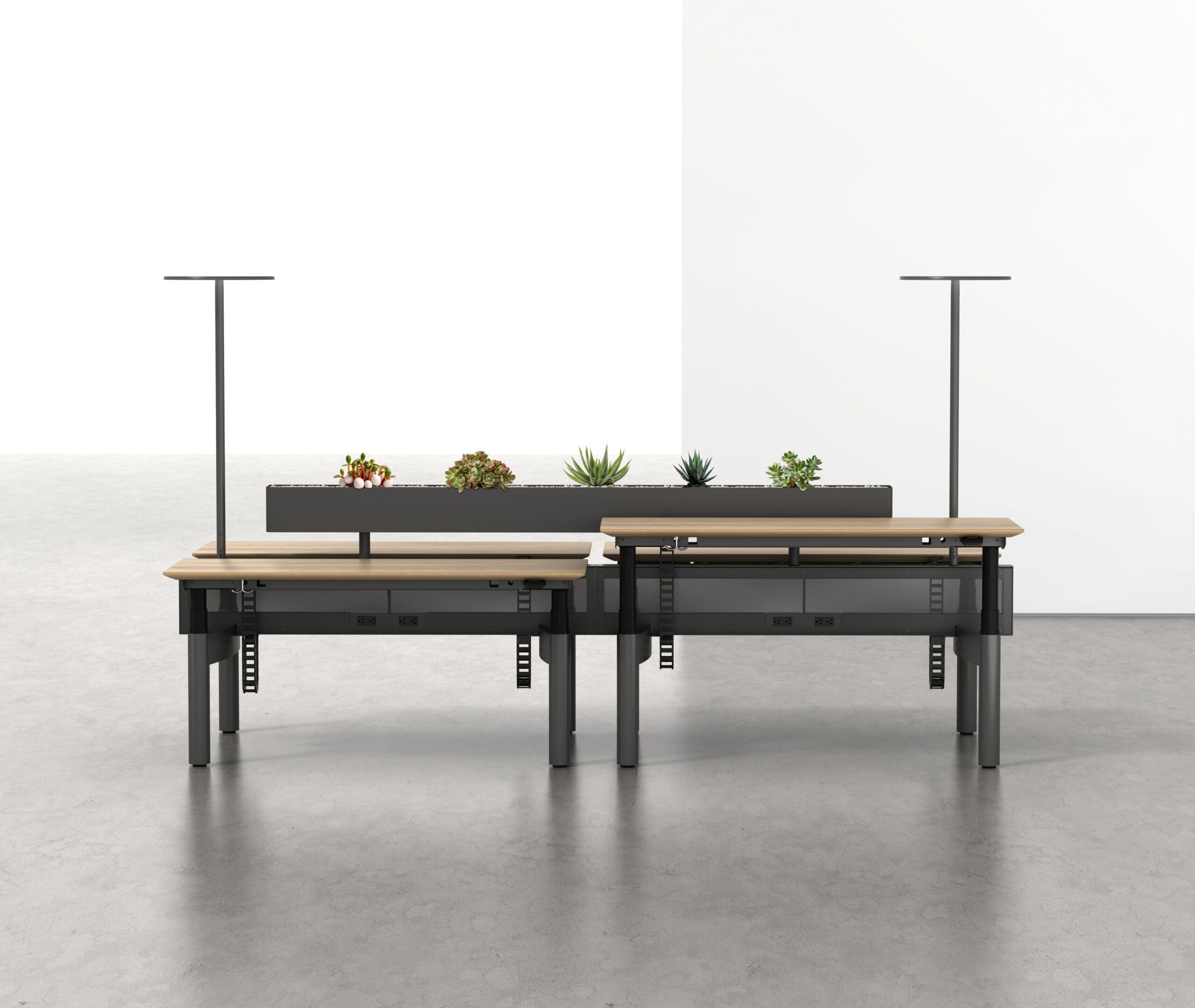Edison Workbench
Watson | Through on-site, in-person meetings with the customer, the team brought the product from a design proposal to launch in under ten months. An existing Watson offering further sparked the customer-focused development of the Edison Rail. This rail system is defined by the revolutionary way it can be angled at joining rail segments to create non-linear layouts and easily adapt to its environment in real-time. The concept of a flexible, bending workbench designed to complement the rail had been simmering for a while. As they delved deeper into the customer’s needs—specifically the ability to swiftly adapt to fluctuating numbers of in-office staff and their spatial requirements—the team realized the potential for adaptability on a new level. This led to an innovative solution: workbenches that could be seamlessly linked to add workstations and detached from one another to remove them while ensuring a complete product at any reconfiguration stage. Eventually, the Edison Workbench was born – and though its form factor is familiar, it is a radical departure from other height-adjustable workbenches on the market. Individual workbenches, whether single-sided, dual-sided, fixed-height, or height-adjustable, can be connected and placed throughout a floor plan. They can be connected or disconnected without additional components and finished with a small metal plate that attaches to its end. Though the Edison Workbench configures beautifully in traditional linear setups, it shines as an engaging way to create pockets for focus in an open plan.

